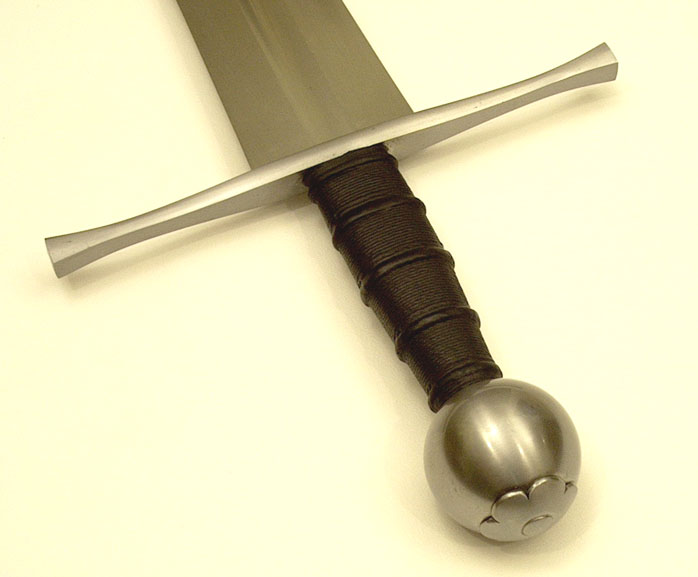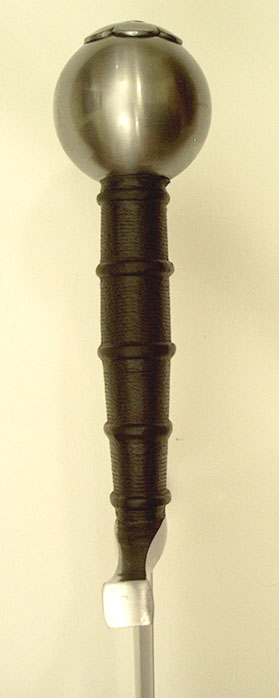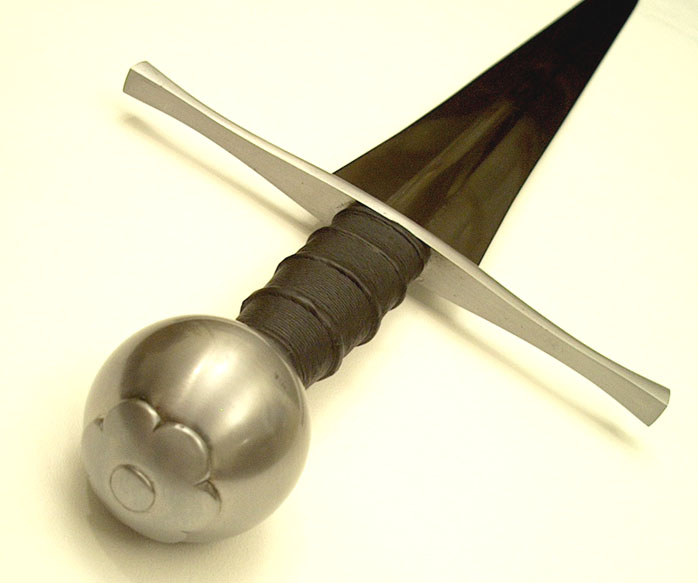Visually, this sword is a bit of an odd duck, but it grew on me over time. At first glance the cross and pommel are very simple. Indeed the pommel is, but the rosette really adds a different dimension to it. The cross is square in cross-section, but narrows between the grip and the trumpeted end on either side: a nice touch. The blade's top half has interesting features as well: the blade tapers at the base, then not much at all to the point. Some people have remarked that the blade's end (between the fuller and the tip) looks unfinished. At first it looked strange to me, too. I think this stems from the fact that Albion is one of the few makers out there getting cutting early cutting swords right. Oakeshott describes these types as having a light, flat blade. Many makers give their cutting blades a diamond or hexagonal cross-section between the fuller and the tip. It took some time for me to get used to a blade tip with no central or side ridges, but I believe it is not only period-correct, but a preferred way of making a cutting sword designed to go against soldiers clad in mail.
How does it perform? Like a beast. At 3 pounds, 9 ounces it's no lightweight. It handles easily, though, and with a lot of authority. The grip swells toward the pommel, where your smaller fingers go, creating a secure grip. The cord risers also add to the security of the sword in hand.
This sword is unlike anything else on the market, though it may not appeal to everybody. It's not flashy, but it does have an understated elegance to it. As a cutter, it would be devastating in battle.



